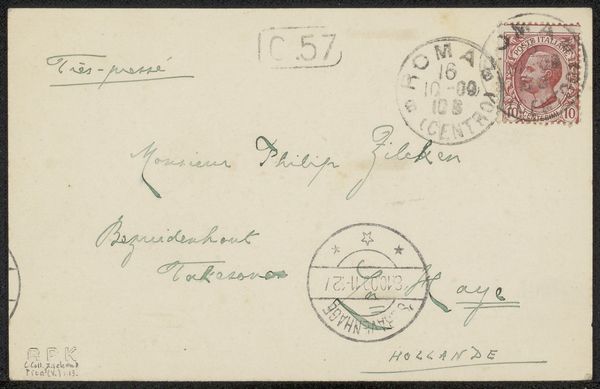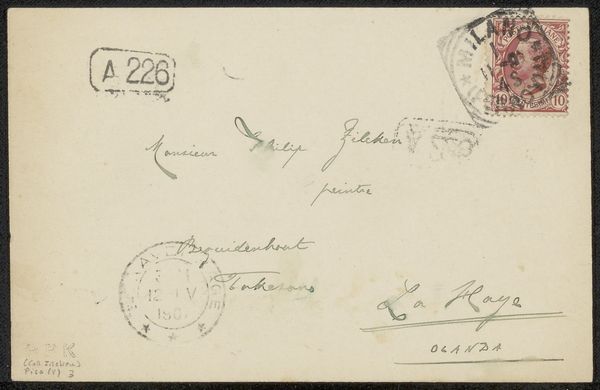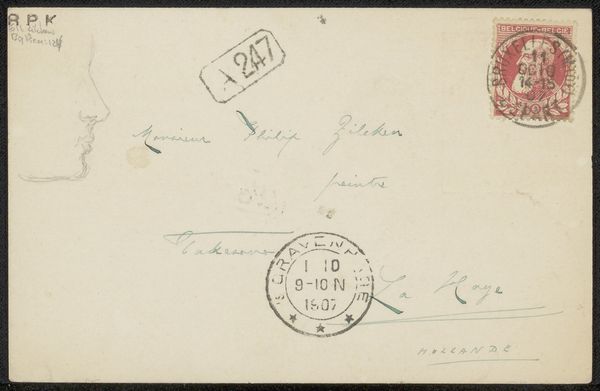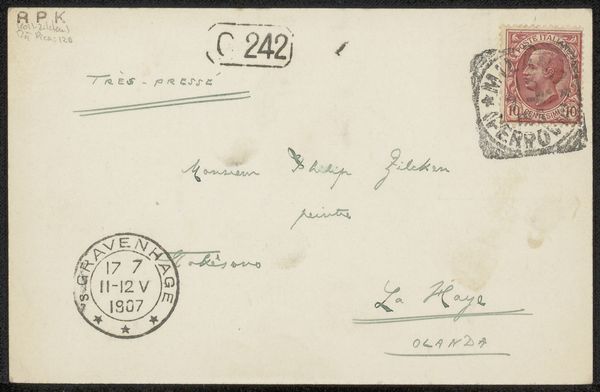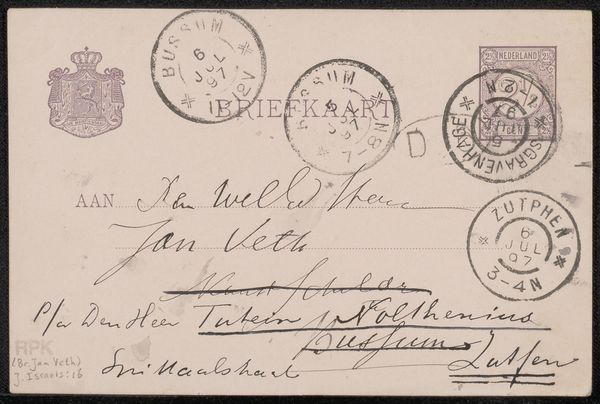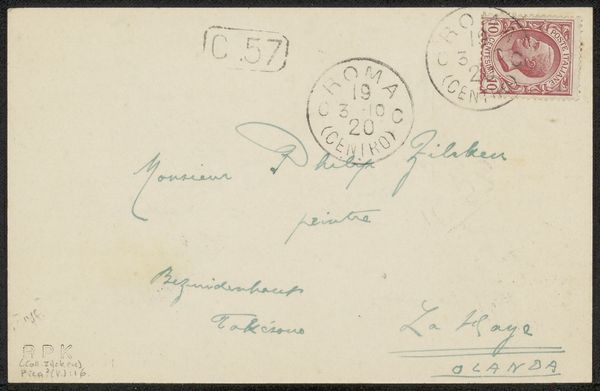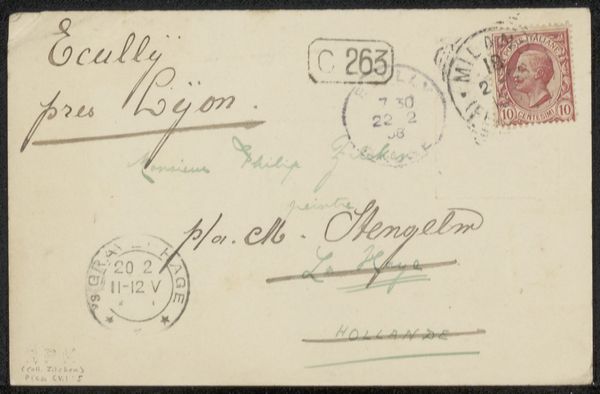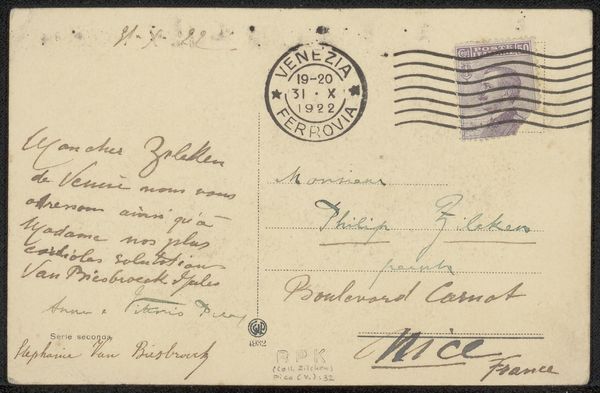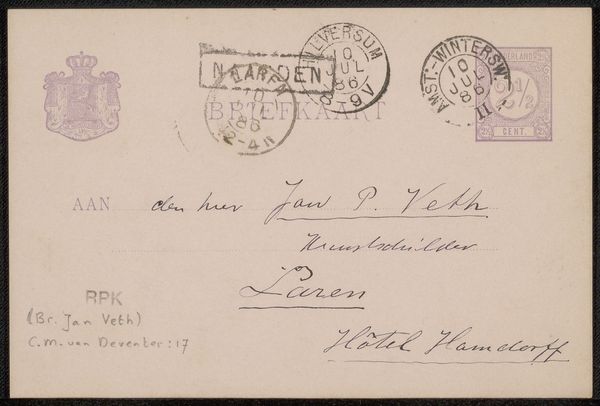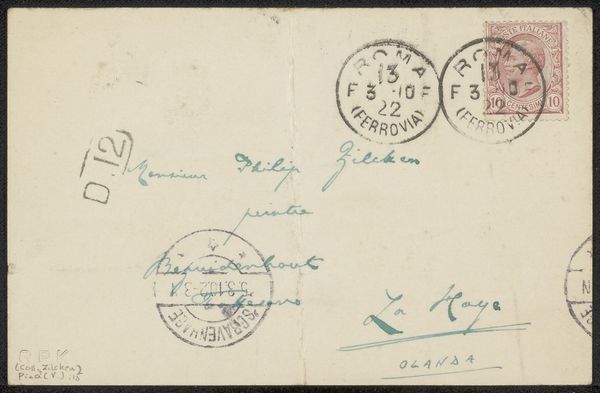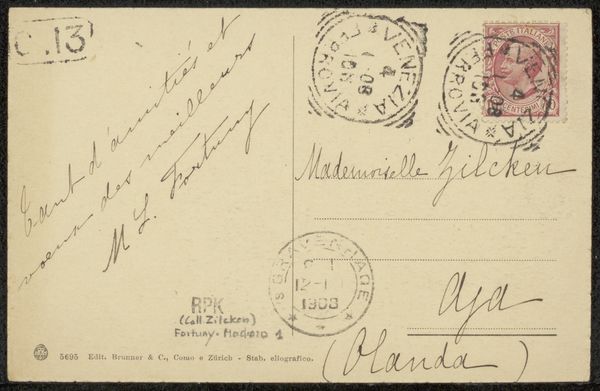
drawing, mixed-media, collage, print, paper, photography, ink
#
drawing
#
mixed-media
#
collage
# print
#
paper
#
photography
#
personal sketchbook
#
ink
#
ink drawing experimentation
#
sketchbook drawing
#
storyboard and sketchbook work
#
sketchbook art
Copyright: Rijks Museum: Open Domain
Curator: Our next artwork is a mixed-media piece, probably created between 1910 and 1914, titled "Brief aan Philip Zilcken." The piece incorporates drawing, collage, print, and photography on paper. Editor: My first impression is that this feels like a time capsule, a fragment pulled from a lost world. The layering of stamps and handwriting creates an incredibly intimate texture. Curator: The image is essentially a vintage letter or postcard. Consider the postal marks, the careful handwriting. Each stamp acts as a tiny monument, a silent witness to the passage of this correspondence through space and time. What do these fragmented symbols evoke for you? Editor: Formally, the overlapping seals and scattered text establish an incredibly active visual field, but it remains grounded, fixed by the geometry of the stamp and the underlying structure of the written address. The different weights and styles of handwriting provide their own kind of compositional tension. Curator: Precisely. The stamps themselves function as more than just indicators of postage. The portrait on the stamp links it back to specific figures of power. The handwriting offers an implicit gesture, revealing much of the individual’s history in this piece, hinting at class, education, personality, or intentions. Editor: Do you see a hierarchy within the work? The handwritten text dominates the foreground, with the stamps arranged around it like satellites. Is it attempting to convey immediacy? It reminds me of a Dadaist collage but lacks that movement’s deliberate iconoclasm. Curator: I don’t know if hierarchy is necessarily the intention here. These stamps and postmarks authenticate the letter and validate it, linking this personal correspondence to the workings of a vast global system of communication, bureaucracy, and social norms. Editor: I see what you mean. This seemingly simple object unfolds into something far more complex upon closer observation. It highlights how a found object can have a structure which mirrors cultural practices and meaning. Curator: And the act of preserving it elevates this fleeting correspondence into a poignant reflection on connection, memory, and distance, wouldn't you agree? Editor: Absolutely. The interplay of the intimate and the official adds considerable depth to a humble piece of paper. A beautiful visual study, I daresay.
Comments
No comments
Be the first to comment and join the conversation on the ultimate creative platform.
